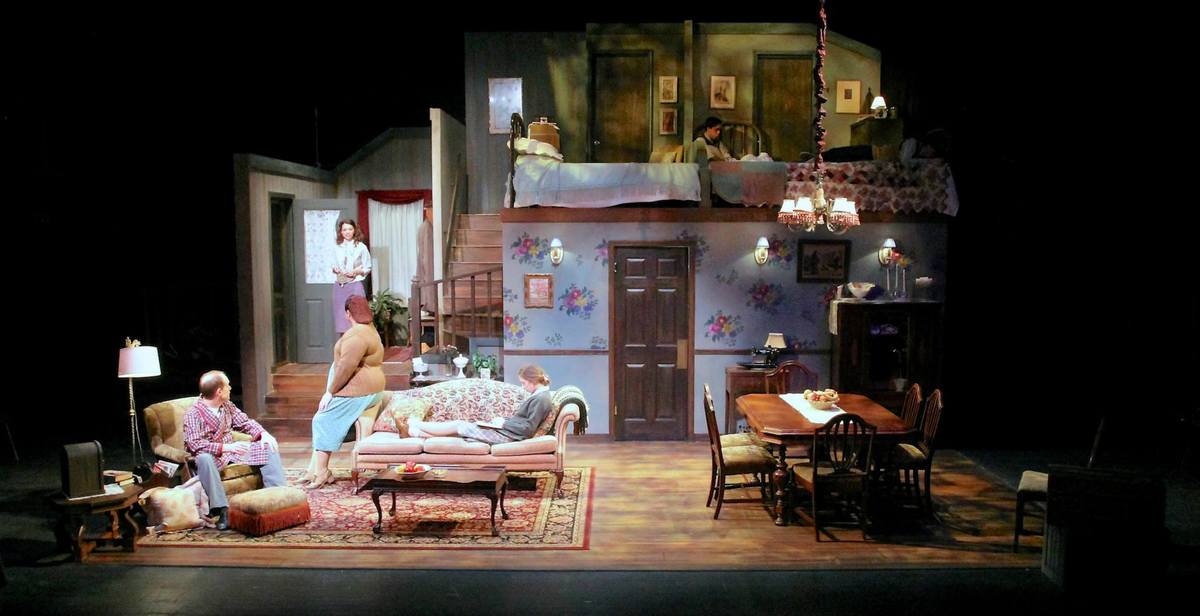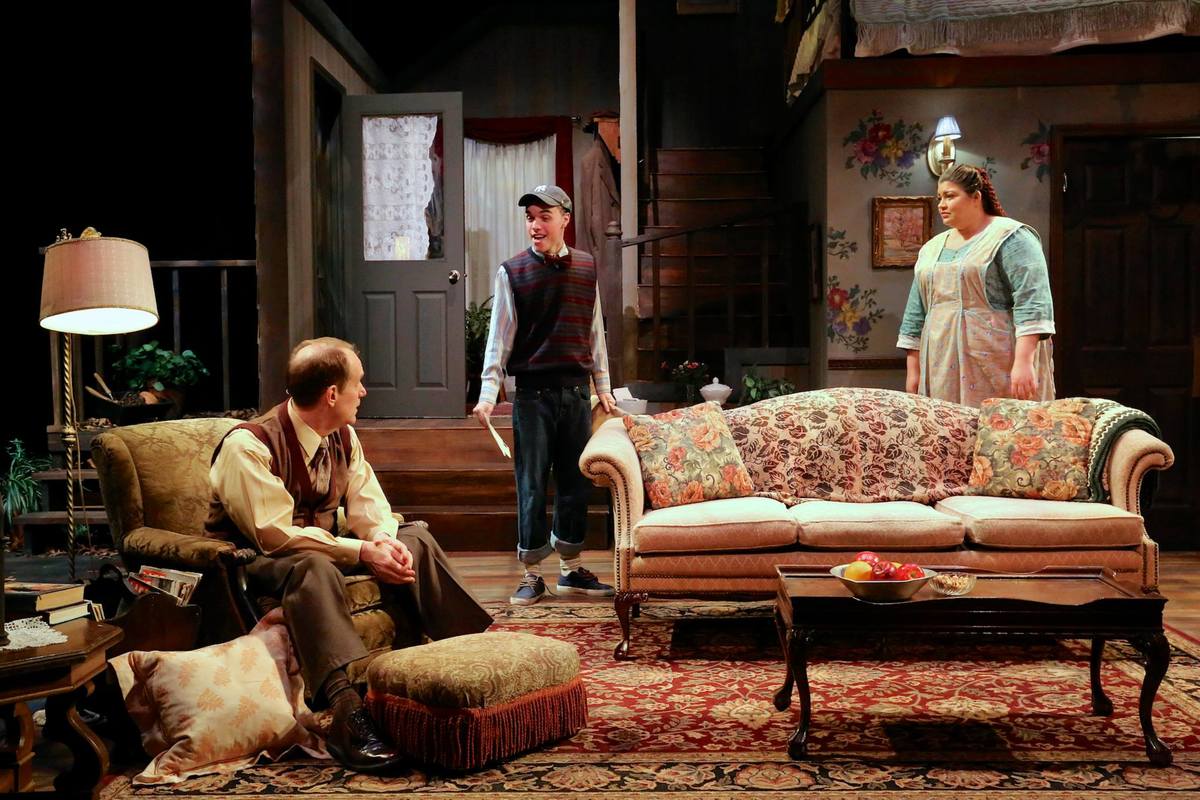AlexDavila
Member
About two years ago, I designed sound for a production of Brighton Beach Memoirs with a well-equipped community theatre. The audience was seated onstage on risers in a three quarter round configuration. The original intent was to embed mics into the set and rely on discreet area mic'ing in lieu of body mics because of the intimacy and physical closeness of the audience. See the attached photos:
We had some success with a Countryman B6 embedded in the chandelier and a couple other lavs on dressers in the upstairs bedrooms, but there were many dead areas onstage mixed with the poor acoustics. Because of this and concern for our older patrons, we ended up integrating body mics after the second dress with much success. The whole experience left a bad taste in my mouth regarding area mic'ing. I feel like the problem was not only a lack of ingenuity on my part, but also a scenic design that wasn't conducive to hiding mics. Does anyone have any thoughts on the situation? Also, can anyone direct me toward examples of discreet area mic'ing, including equipment and techniques?
Thanks!
We had some success with a Countryman B6 embedded in the chandelier and a couple other lavs on dressers in the upstairs bedrooms, but there were many dead areas onstage mixed with the poor acoustics. Because of this and concern for our older patrons, we ended up integrating body mics after the second dress with much success. The whole experience left a bad taste in my mouth regarding area mic'ing. I feel like the problem was not only a lack of ingenuity on my part, but also a scenic design that wasn't conducive to hiding mics. Does anyone have any thoughts on the situation? Also, can anyone direct me toward examples of discreet area mic'ing, including equipment and techniques?
Thanks!




